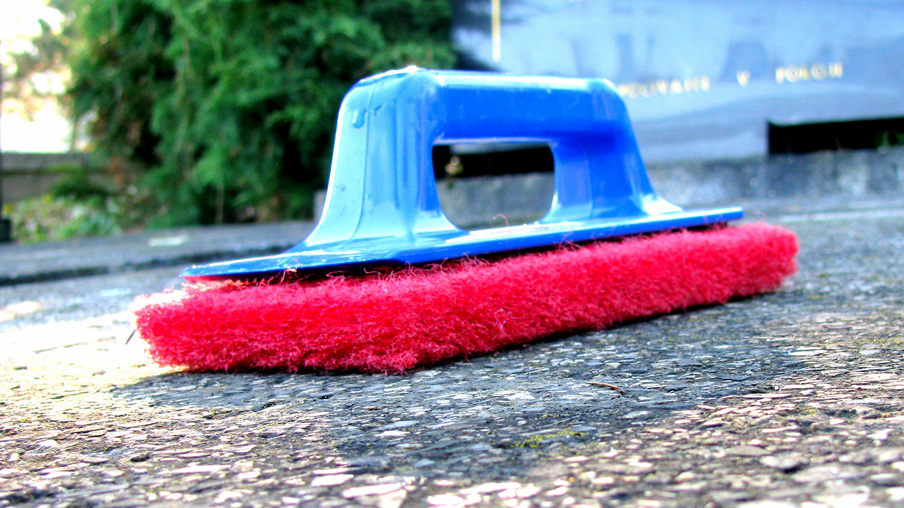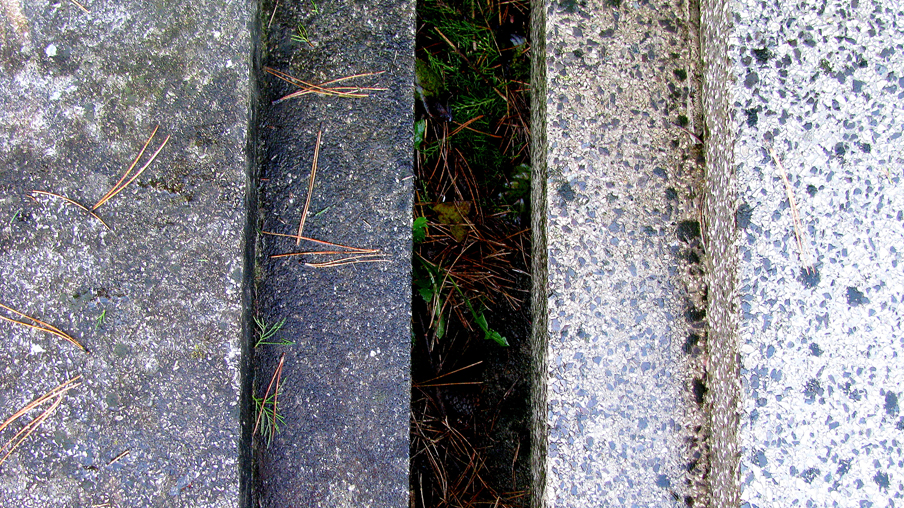Tombstones and graves are not only a place where we remember our loved ones, but also an important part of our culture and history. Regular and professional care of tombstones helps preserve their appearance and extend their lifespan. This article will provide you with all the information you need to know how to properly clean, protect and maintain your headstone.
Tombstone materials
Before starting any activity, it is important to define exactly what material the tombstone is made of. Different types of stones require different approaches. As many as nine out of ten people will claim that they need to work on marble, but probably very few will be right. That is why we addressed this issue. That is why we addressed this issue in the article Granite or marble? Some advice on how to correctly identify the stone.
Step by step: How to clean a tombstone
1. Status evaluation
Before you start cleaning, carefully inspect the headstone. If it's visibly damaged, cracked, or frayed, it may be best to call a professional to prevent further damage.
It is important to define whether a cleaner is needed for organic pollution (leaves, moss, resin from trees...) or a cleaner for inorganic pollution (wax, paint from wreaths) or a cleaner for corrosion-rust.
2. Basic equipment needed for cleaning the grave
For cleaning you will need:
- A brush or rice bowl, cleaning pads, steel wool.
- A bucket or bucket with clean water for rinsing and a bucket for processing the detergent-cleaning agent.
- Choose the cleaning agent according to the type of stone. For example, acid cleaners are not suitable for marble (they damage the structure of the stone, the gloss).
- Rubber gloves.

PHOTO: cleaning pad intended for thicker materials
3. Removal of surface impurities
Start by removing dust, moss and lichen from the surface of the stone using a soft brush and water with a cleaning agent. Do not use hard brushes or metal tools that could scratch the surface of the stone.
4. Use of cleaning agents and deep cleaning of the stone
A mistake often happens when cleaning the stone, when commonly available detergents are used. We recommend products designed exactly for this job. What is the difference between them? The most important thing is that the original stone cleaning product is active only once. Whereas conventional cleaners are activated upon re-contact with water. Thus, with incomplete rinsing, the chemical process is reactivated in the pores of the stone, for example, every time it rains. The latter causes gradual erosion and therefore a lower service life of the material.
If the stone is very dirty, you can use a stronger concentrate and repeat the procedure several times. However, avoid aggressive - acidic chemicals, especially on softer stones such as limestone and marble. Apply the agent to the stone and let it work for a while, then gently clean the surface with a brush or pad. If necessary, repeat the process.
5. Thorough rinsing
After cleaning, it is important to thoroughly rinse the stone with clean water and check whether the surface is flawlessly washed. After inspection and thorough drying, you can proceed to the next step - applying a protective coating, impregnation.
A brief selection of the best-selling cleaning products
- Rust cleaner - thoroughly and deeply cleans the rust traces of the traces of wreaths.
- Cleaner for organic pollution caused by lichens, mosses or traces of leaves.
- Cleaners for inorganic pollution, which arises, for example, from candle wax.

PHOTO: detail of a terrazzo grave washed once with BERT 27 cleaner (right) and an originally polluted grave (left)
Gravestone protection, protective coatings and impregnations
After cleaning and thorough drying, we recommend treating the tombstone with a protective coating that protects against pollution and weather effects. In our offer you will find impregnation products with various effects (strengthening effect, wet effect, strong color enhancement, nano protection...) designed for different types of stones. Impregnation creates a protective layer, repels water, oils and prevents dirt from settling.
What is a protective coating - impregnation?
The impregnation coating protects the surface of the stone from deep pollution, closes the capillaries. Really high-quality impregnations have a special property - vapor permeability. It means that the impregnation allows the moisture from inside the material to "breathe" and at the same time protects the entry of liquids and dirt into the material.
,,ATTENTION - in connection with the impregnation, the shine of the stone is not solved, it is not a polish or "stone varnish". Impregnations may or may not highlight the COLOR of the material, it depends on the choice of product."
What to pay attention to and what we CANNOT advise you on.
Regardless of which seller you choose protective coatings, pay attention to a proper explanation and take over the complete technological procedure. It is highly probable that in case of an undesirable result, correction will not be possible, or "there will be no step back".
"If the material absorbs an inappropriate impregnation that hardens in it, its dissolution and further correction is not possible. The material may remain permanently damaged with visual defects”
In our offer you will find stone chemistry from renowned brands that deal exclusively with chemistry for stone. Specifically, the Italian brand Bellinzoni offers a wide range of top products, and our team is regularly trained in the given issue. That is why we can advise you with your project. Unfortunately, very often we solve problems only when it is too late, when chemistry from another brand that we do not know has already been applied. In such a case, we refer the client to the place where the products were recommended and sold to solve the problem. Often these are building materials or an e-shop without training and professional knowledge...
Brief selection of the right impregnation coating for your project
When choosing a protective coating, it is important to choose the right type according to your material, as each material has different properties, such as density or absorbency. Another option is whether you want to enhance the color of the material (similar to how it would be soaked in water (wet effect) or if you want to keep the natural color.
- Materials such as terrazzo (stoneware) are, together with sandstone, more absorbent materials. We recommend impregnation with a strengthening effect or with a strong color accentuation.
- To protect marble or travertine, we recommend impregnation with nanotechnology, a strengthening effect or with black color enhancement.
- In the case of polished granite graves, the range of impregnations is wider. The most preferred are wet effect, darkener for black materials and impregnation with strengthening effect.
How to properly apply protective coating on stone?
- The material must be as clean as possible. If you apply impregnation to a dirty surface, it is quite likely that you will also preserve the dirt and further cleaning will be difficult.
- The material must be dry. Where the water is soaked, the impregnation will not reach and there is a risk of stains.
- The material must not be hot. During sunny days, a high temperature is generated on the surface of the stone. The impregnation needs its time to soak into the depth of the material. In the case of high temperature, the process is accelerated and the impregnation hardens on the surface. This results in a short life of the protective film on the surface.
- Apply the impregnation in two to three thin layers. The number of coats depends on the absorbency of the material. The time interval between layers is individual according to the type of material and the surrounding conditions. We recommend a minimum of 3 hours between layers.
- Do not hesitate to contact us at +421903528039 and consult with us about your project.
Regular maintenance
- You should clean the tombstone at least once a year, ideally in spring or autumn when the temperatures are not too high. Regular maintenance will help prevent dirt build-up and stone erosion.
- Regularly check the stone for moss and lichens that can disturb the surface. You should remove this dirt as soon as it appears to prevent it from growing and damaging the stone.
Choosing the right products for regular maintenance
If you have applied our entire procedure from this article, the following regular maintenance will be much easier. By thorough cleaning, you have removed the germs of mosses and lichens. Proper impregnation prevents the reappearance of dirt and deposits in the pores of the material.
In this case, we can recommend a practical spray preparation for regular maintenance containing everything you need for regular maintenance.
If you have applied protective coatings correctly, you will not have to do this activity for several years. If the color effect has disappeared, you can re-apply a thin layer of protective coating with a soft cloth.
Conclusion
Caring for tombstones is an essential way to honor the memory of our loved ones. Regular maintenance, proper cleaning and protection will help preserve these places for many years. Make sure you always use the right products and techniques, and don't be afraid to consult an expert. Your care and attention will keep the headstones in good condition for generations to come.
